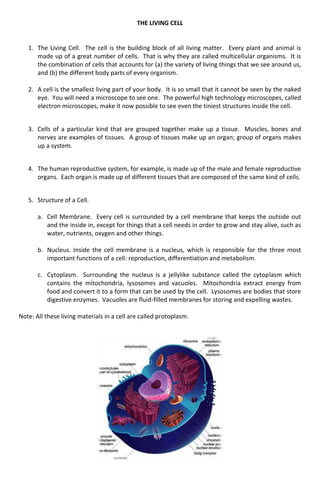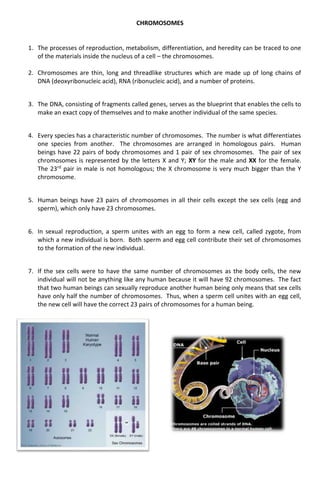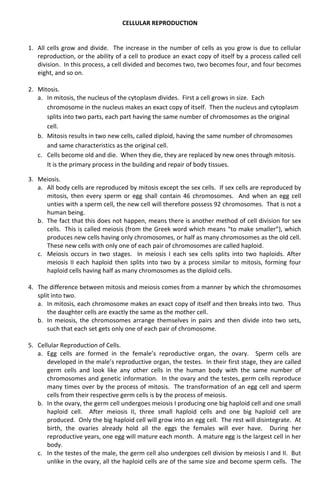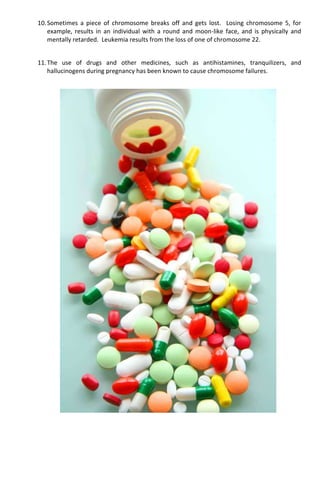The document discusses the structure and function of cells, cellular reproduction through mitosis and meiosis, human reproductive systems and organs, the process of human development from embryo to fetus during pregnancy, and some genetic abnormalities that can occur. The key points are:
1. Cells are the basic unit of life and come together to form tissues, organs and organ systems. Cellular reproduction occurs through mitosis, which produces identical cells, and meiosis, which produces gametes like sperm and egg cells.
2. The human reproductive systems include male organs that produce sperm and female organs involved in producing eggs and supporting pregnancy. Fertilization occurs when sperm meets egg.
3. A fertilized egg undergoes cell









